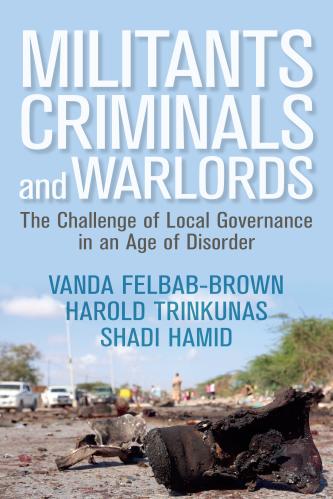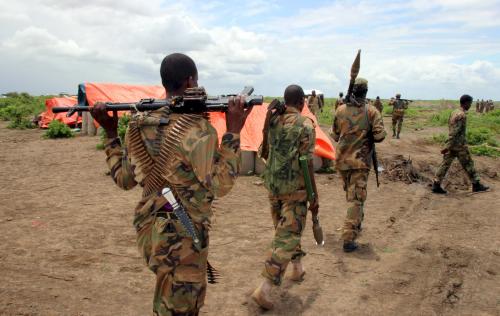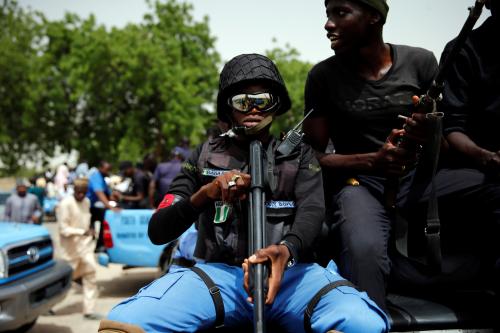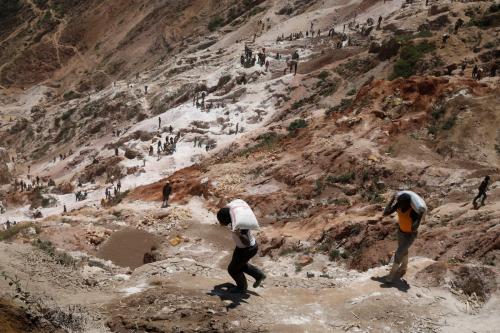For the past three decades, militia groups have been a defining feature of Somalia’s conflict landscape. Communities create or join such groups to respond to conditions of insecurity and vulnerability. Somali powerbrokers, sub-federal authorities, the national government, and external interveners also turn to armed groups as a tool for pursuing their own interests.
Some observers argue the militias offset the weakness of Somalia’s official security forces, produce greater motivation and better intelligence, and enhance bonds with local communities, perhaps even suppressing crime and intra-clan violence.
But as I detail in a new United Nations University report — which also features comparative cases of Nigeria and Iraq, Somalia’s militias also have many detrimental effects. Should militias be relied upon for security provision and counterterrorism objectives? My analysis of a range of Somali militias — Macawiisleey, Ahlu Sunna Wal Jama’a, South West Special Police, Mukhtar Robow’s militias, Ahmed Madobe’s militias (the Jubaland State Forces), the Puntland Maritime Police Force (PMPF), and the Puntland Security Force (PSF) — reveals that the promised payoffs do not always materialize. Even if they do, unleash many problems.
Indeed, the state-aligned paramilitary forces are an underlying source of insecurity, violent contestation, abusive rule, impunity, and pernicious outside manipulation. They give rise to and allow the entrenchment of powerful militant groups such as the jihadist al-Shabab. As such, their increasingly central role in the fight against al-Shabab is a double-edged sword: Short-term military gains must be balanced against the militias’ longer-term, destabilizing impact.
As state-building falters, militias back in the spotlight
In 2020, militias are once again at the forefront of a major policy debate about the strategy for state-building and security in Somalia. Since 2012, after helping to dramatically weaken a brutal, dangerous al-Shabab regime that controlled much of the country, the international community has assisted in building state institutions in Somalia destroyed by two and half decades of civil war and jihadi groups.
But eight years later, many of these efforts have not delivered adequate results. Al-Shabab remains one of Somalia’s most powerful political and military actors. In fact, since 2018, the group has gained momentum and deepened its political entrenchment. Existing efforts to strengthen the Somali National Army are not producing sufficient results. Intensified rivalries between Somalia’s federal government and the country’s states (known as federal member states) further hamper the deployment and effectiveness of the SNA. Some outside partners are losing their appetite for the state-building project in Somalia, as I learned during recent interviews. Moreover, many local communities deeply distrust and resent the SNA, which they perceive as more of a conglomeration of predatory militias than as a reliable competent state security service.
Militias’ many risks and downsides
But embracing militias carries many risks: The loyalties of militia groups are fluid. They are susceptible to recruitment by their enemies and may prioritize their own interests — or those of an external patron — over those of the state. Militias also divert manpower and resources from Somalia’s official forces. Worse still, Somalia’s militia groups, particularly without supervision or assured sustainable income, engage in predatory behavior. Deeply entrenched in the political economy of Somalia, militias have strong tendencies to appropriate political authority, strengthen authoritarian forms of rule, monopolize local economies, and engage in other mafia-like economic and political activities.
In these ways, they exacerbate local conflicts, increase grievances, and enable al-Shabab’s political entrenchment in parts of the country. They compete with each other and, at times, with the federal government. Thus, a poorly concluded defeat of al-Shabab could actually plunge the country back into open fighting, as the remaining militias compete for power.
A poorly concluded defeat of al-Shabab could actually plunge the country back into open fighting, as the remaining militias compete for power.
Geopolitical proxy wars in Somalia and local power struggles
Foreign actors, such as United Arab Emirates, Kenya, Ethiopia, and the United States, also instrumentalize Somalia’s militias for their purposes, entangling the country in geopolitical rivalries that could further destabilize the country. Intensified regional and geopolitical rivalries increasingly shape local contestations in Somalia — and are also shaped by those local dynamics.
The cold-war conflict between Qatar and Turkey, on the one hand, and Saudi Arabia and the Emirates, on the other, intersects with and exacerbates conflicts and tensions between Somalia’s federal government and the country’s federal member states, themselves already at a level of tension and suspicion not seen in years. Federal member states — which carefully guard their autonomy — see the militias as a crucial security hedge against the federal government.
What to do with Somalia’s militias
There is no consistent policy toward militia groups in Somalia. Federal and sub-federal government actors and members of the international community work cross purposes: Many increasingly embrace and bolster militias; others fear their risks and point to the viciousness of Somalia’s 1990s civil war for which the militias and warlords significantly contributed. In the report, I detail both existing and potential policies for reducing the scale and negative effects of the militias and assess the feasibility and likely effectiveness of each approach. The assessed policies include:
- Integrating militias into formal security forces;
- Putting them on payroll and providing them with non-lethal assistance without integrating them into formal forces;
- Disarmament, demobilization, and reintegration (DDR); and
- Addressing local conflicts as an indirect approach to eliminating the impetus for militias.
Overall, despite the militias’ downsides, rolling them back does not seem feasible at this time, given al-Shabab’s new momentum and the lack of progress in building up the Somali state’s capacities. Instead, policies should be adopted to reduce at least some of the most pernicious effects of militias and to mitigate their worst tendencies, holding accountable the most egregiously behaving militias. Critically, the Somali government, the federal member states, and the international community should refocus efforts on reducing local conflicts, as part of the broader strategy to combat al-Shabab and build stronger relations between state and society. The policy recommendations I detail include:
- Avoiding or minimizing the creation of new militia groups;
- Appropriate vetting of militias prior to integration into the Somali official forces;
- Working toward ending impunity for human rights violations;
- Providing human rights and civics training;
- Establishing a salary system for militia members integrated into the SNF;
- Creating an international payroll for some militias (for example, darwish) conditioned on a serious vetting process for human rights abuses;
- Establishing a DDR program for militias, possibly accompanied by a reconsideration of the existing “high-risk defectors” program for al-Shabab; and
- Developing a strategy for al-Shabab that prioritizes support to local conflict resolution within communities and across clans.








Commentary
Hot and troubled: Somalia’s militias and state-building
April 16, 2020